When it comes to woodworking for beginners, there are 6 things that I think are essential to know for how to start woodworking.
I’m going to discuss each of these tips in hopefully a really simple way to make it a breeze to understand, so you can get to the fun part of actually starting to woodwork! I wish when I started and was learning how to woodwork that I had a simple beginner tips guide like this one!
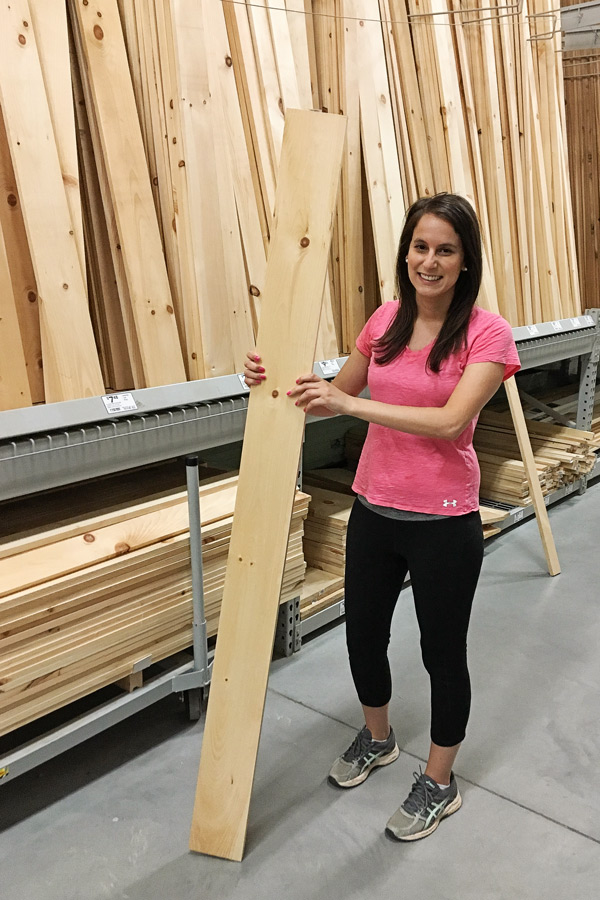
Note, this post contains some affiliate links. For more info see my disclosures here.
You can also check out all of my tips in my woodworking tips for beginners VIDEO here!
6 Tips for Woodworking for Beginners:
1. Create a simple woodworking setup
Figure out a simple setup for your woodworking space. You don’t need a fancy and expensive workshop or garage to start woodworking. In fact, we never had a workshop or garage in our first 7 years of woodworking (though I do dream of having a huge workshop haha).
In our current town home, we always setup a temporary workshop table in our backyard with a pair of sawhorses and a plywood board from the home improvement store.
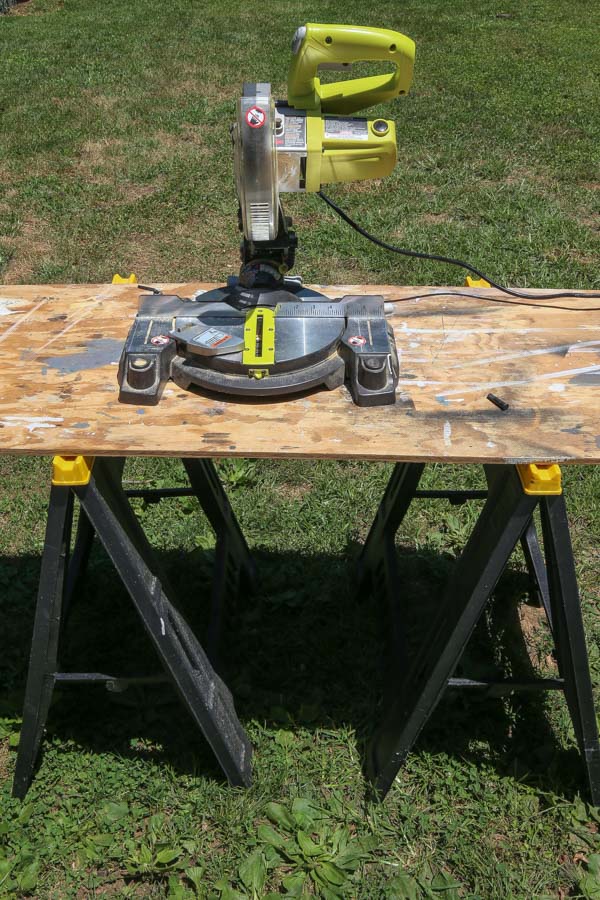
When we lived in our Charleston apartment, we did a lot of apartment woodworking on the ground of our little apartment patio. Sometimes we would use the sawhorses and plywood there too.
Now, if you do have a garage or shed space, I’d recommend setting up a space there since then you won’t have to take it down and set it up each time!
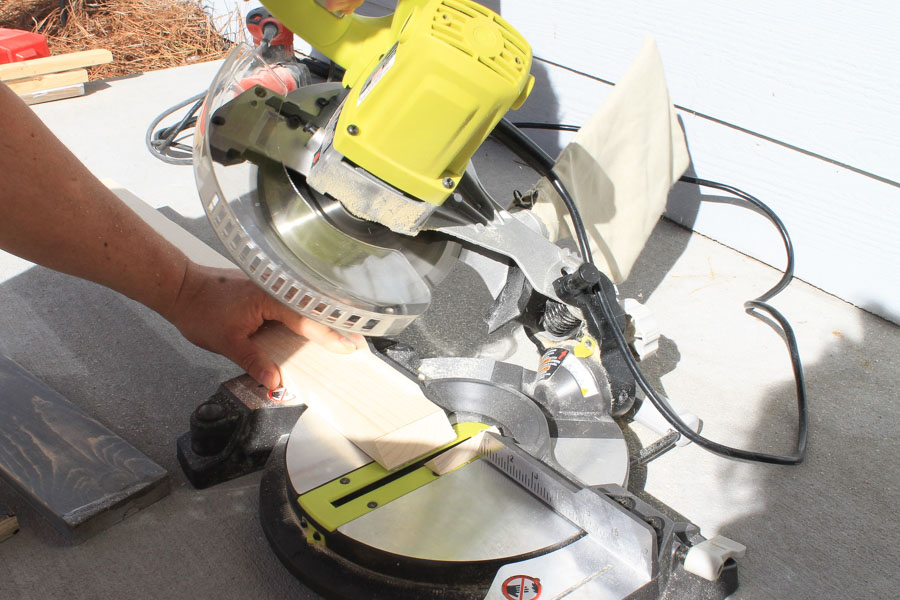
2. Learn how to read a tape measure
I know this seems really simple and you may already know how to read a tape measure so just hear me out on this one!
Often times with woodworking you need to make exact measurements and cuts and it’s rarely pretty even numbers like 15 inches or 15 1/2 inches. It’s usually like 15 5/8 inches or 15 9/16 inches. So, really knowing how to read a tape measure in its entirety is important.
And I’ve created a quick post on how to read a tape measure the easy way along with a helpful free printable.
3. Understand lumber dimensions and species
First, let’s start with the fact that there are many different types of wood species which are categorized as softwoods and hardwoods.
Softwood examples include pine, cedar, spruce, fir, etc. Hardwood examples include oak, walnut, maple, birch, cherry, mahogany, etc.
I could write a whole post on wood species as each species has unique characteristics and traits. But, one of the most common types of wood used in DIY projects and furniture building is pine wood (a softwood).
Pine is an affordable and readily available option at your local home improvement store and it comes in many sizes. I highly recommend using pine for beginner woodworking projects. Then, as you improve your skill, try working with some different wood species!
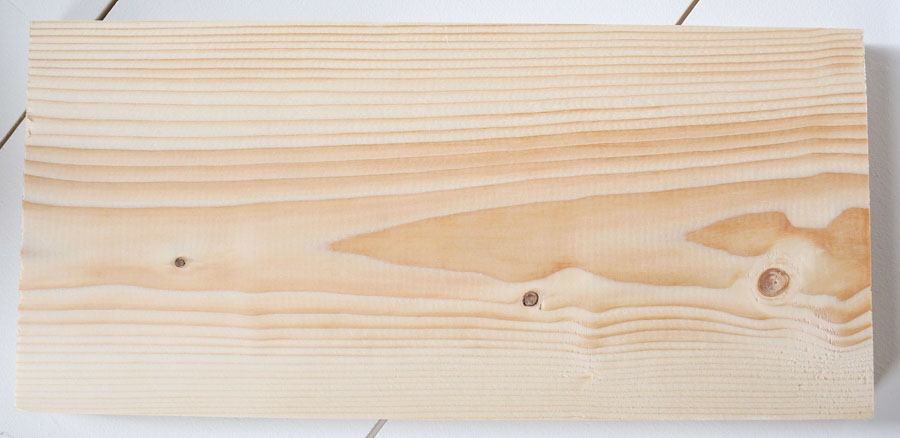
Second, learning how to read lumber dimensions, like knowing what 1×2 or 2×12 actually means, is really important.
Understanding softwood lumber dimensions will help you to read woodworking build plans, shop for lumber, and understand the general measurements for your projects. I’ve provided a simple explanation to lumber sizes along with a free lumber size chart printable here!

4. Try to always use straight wood boards
When it comes time to pick out the wood boards for your woodworking project, try to use the straightest boards you can find and avoid warped or bowed boards.
This may require a bit of picking and digging through the wood pile at the store, but it will make a huge difference when your actually building and it will save you a lot of headaches!
Often times at first glance a board looks straight and the fact that it is actually bowed or has some warping isn’t always obvious.
So the trick to knowing for sure, is to hold the board up towards your face, with the other end on the ground, and look at it at a downward angle (as shown in the below photo). This method will allow you to see if it is bowing at all.

Below are two photos comparing more bowed wood boards versus a more straight board.
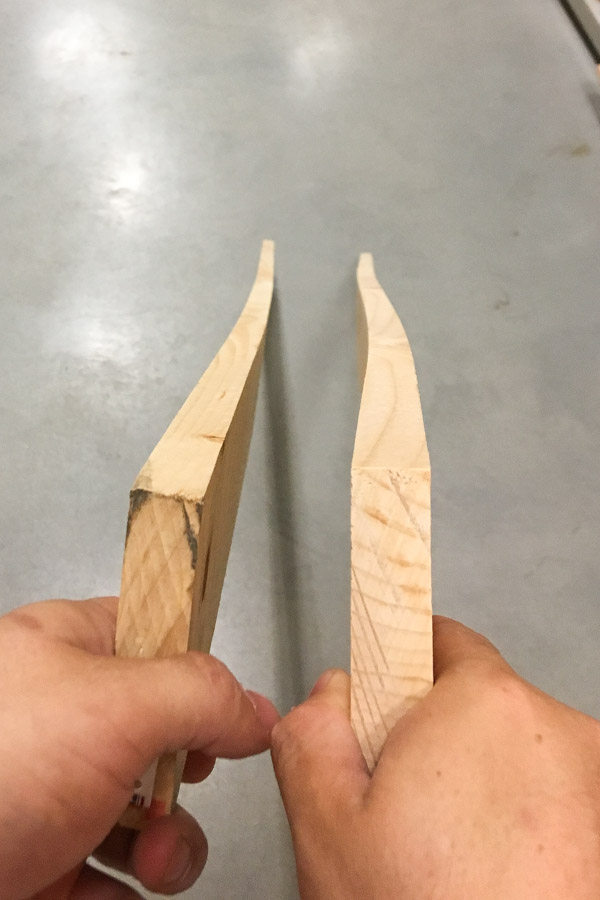

Keep in mind, there are no perfect boards, but try to always use the straighter boards and avoid warping boards.
Also, Brandon and I have found that when it comes to picking out lumber at Home Depot and Lowes, they tend to stock up on fresh boards a few days before the weekend starts (so Thursday/Friday). And then, on Sundays and Mondays, the boards are usually really picked over and there isn’t a good selection. Just another tip to keep in mind!
You can also check out the lumber selection at your local lumber yard for more selections and better pricing too!
5. Learn how to use a few essential tools
When it comes to woodworking for beginners, I think it’s important to just learn how to use a few of the most essential woodworking tools for beginners. These simple tools include a miter saw, cordless power drill, random orbital sander, Kreg Jig, and a brad nailer.
You can also see a list of low and high budget options for each of these tools on my favorite DIY project supplies and tools resource page!
There are so many awesome tools available on the market today, it can be quite overwhelming as well as expensive to try to buy them all and know how to use them.
Once you learn the basic skills of using the most essential power tools and some basic hand tools, you will be able to start building in no time. As your skill level grows, you will start to feel comfortable learning any other new tools in the future like a circular saw, table saw, and router.
You can check out all of the details on the tools I think are best for beginner woodworkers here!
I know learning how to use power tools like miter saws can be intimidating at first as a beginner woodworker or DIYer. But, once you learn how to use them properly and start with just some simple projects, you will start to be more at ease and love building things!
I do want to mention my most favorite tool, which has really helped me to build many of my DIY furniture projects, which is the Kreg Jig, which is used with a cordless drill.
See my tutorial on how to use a Kreg Jig for more details on this tool as well as how to use it!
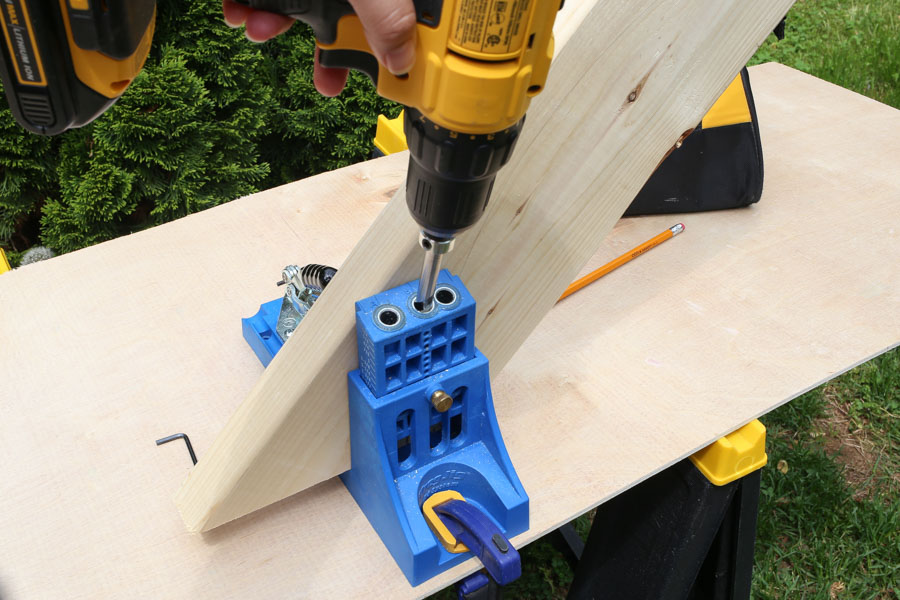
Finally, as I shared in my post last week on how I learned woodworking, I learned how to use power tools by watching YouTube videos and then just trying them out for myself.
I highly recommend this method, it’s a great way to learn how to use your power tools. There are lots of videos on specific models of tools too from the brands themselves on YouTube. So, this is a great place to start with learning how to use the most important tools.
Alternatively, you can enroll in my digital course, DIY Woodworking Made Simple, where I teach you step by step how to use these essential power tools and hand tools! I also cover everything else you need to know to get started with building DIY projects from start to finish!
Tool Safety
Very importantly, review the tool manual and safety guide for your own tools and wear proper PPE (personal protection equipment). Then, go ahead and try the tool out yourself and start using it!
6. Sand your wood
Finally, properly preparing your wood surface is super important. It will make a huge difference when it comes times to stain, paint, or finish your wood.
There are a lot of tips for wood surface preparation, but sanding the wood is one of the most important steps. And I find it really helpful to do the bulk of my sanding before I start ripping (cutting) and building with my wood since it’s still in whole pieces.
You can check out my simple, beginner tips for how to sand wood here. Again you only need an orbital sander to get started and it can be used for a variety of projects. You don’t need a belt sander or other fancy sanders for most projects!
Once your wood has been sanded well, you can have fun with picking out a stain or paint color for your woodworking project! For help with picking the right stain color, check out 10 favorite wood stain colors and 5 grey wood stain options.
And if you need help with learning how to stain wood, see my how to stain wood tutorial.
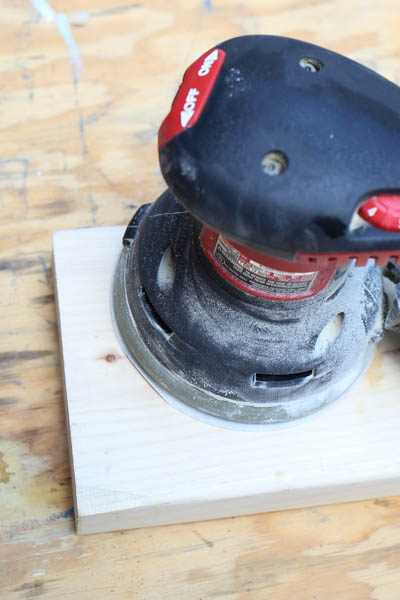
Well that’s a wrap on my best and easy woodworking for beginners tips! I hope you’ve learned what you need in order to get started with woodworking! It may seem like a lot at first, but you will get the hang of it soon!
Once you’re good with the above tips, it’s really just a matter of actually doing it! I recommend starting with simple woodworking projects at first. Many online DIY project tutorials (like mine), have accompanying printable woodworking plans to go with them!
Pick out your first beginner woodworking project tutorial that you want to make and start building! You may just fall in love with woodworking and become hooked like me 🙂
DIY Woodworking Made Simple Digital Course
One last note, if you are ready to take the next step and get the DIY woodworking beginner basics and foundational skills needed to build wood furniture and home improvement projects from start to finish, on a budget, check out my digital course, DIY Woodworking Made Simple!

Check out the other posts in the Intro to Woodworking Series:
- How I learned Woodworking
- Lumber Size Guide with Free Printable
- 5 Essential Woodworking Tools for Beginners
- How to Use a Kreg Jig
- How to Read a Tape Measure the Easy Way (& Free Printable)
- Beginner Woodworking Projects
Frequently Asked Questions
Can I teach myself woodworking?
Yes, you can teach yourself woodworking! I am a self-taught woodworker. If you aren’t taking a woodworking course or class, and just teaching yourself from home, it takes patience, time, research, and lots of practice actually building projects to learn how to woodwork. But, you can start with very easy woodworking projects and tools as a starting point!
How do I start simple woodworking?
As explained above, you can teach yourself woodworking by learning and researching online or in books about woodworking. Also, check out online tutorials and YouTube videos for actual woodworking projects and then start practicing woodworking with simple and easy woodworking projects.
Make sure to also follow proper tool safety procedures by reviewing your tool manuals and wearing proper personal protection equipment!
If you want to learn much faster than teaching yourself, then check out my digital course, DIY Woodworking Made Simple, where I teach you the DIY woodworking beginner basics and foundational skills needed to build wood furniture and home improvement projects from start to finish, in significantly less time (and frustration) than trying to figure it out by yourself!
What is the best wood for beginner carpentry?
Pine and whitewood, which are both softwoods, are the best wood types for beginner carpentry. They are easy to work with (compared to expensive hardwoods), are less expensive, and are easy to find at your local home improvement store! Plus, if finished properly, they look beautiful too!
***
Thanks again for following along! Be sure to follow along on Instagram and Pinterest for my latest projects, fun updates, and sneak peeks!

Paschal
Friday 8th of July 2022
Please how can I learn physical or in person
Angela Marie Made
Monday 11th of July 2022
That would depend on where you live - I would search and see if there are any woodworking classes in your area! Sometimes community colleges have woodworking classes, too. You could also reach out to local woodworkers and see if they offer any classes. Best of luck!
Sandra Price
Monday 24th of January 2022
This blog is fantastic. I’ve always wanted to learn woodworking, even looked for classes, but could not find anything that looked good. I’m so glad this showed up on my Instagram!
Angela Marie Made
Sunday 30th of January 2022
I am so happy to hear that and that it's helpful :)
Allison
Thursday 30th of July 2020
I am so happy I have discovered you! I am just getting started with this (always had an interest but overwhelmed) but you are making it looks so easy and user friendly! thanks!!
Angela Marie Made
Tuesday 4th of August 2020
Thank you so much, I'm glad this is helping you get into DIY woodworking!!